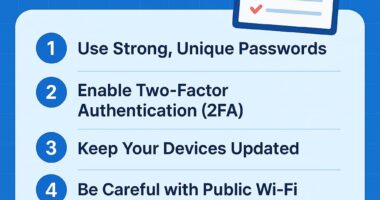Introduction: Beyond Cryptocurrency
When most people hear “blockchain,” they immediately think of Bitcoin or cryptocurrency. While digital money put blockchain on the map, the true power of this technology lies in its ability to verify, secure, and trace information. Blockchain isn’t just about money—it’s about provenance. Provenance refers to the origin and history of an asset, and blockchain provides an unalterable record of that journey. From supply chains to healthcare and even art, blockchain is revolutionizing industries by guaranteeing transparency and trust.
The Role of Blockchain in Provenance
At its core, blockchain is a distributed ledger technology that stores data in a transparent and tamper-resistant way. Every transaction or entry is recorded as a “block” and linked to previous records, creating a trustworthy chain of events. When applied to provenance, this ensures that every step of an asset’s life cycle is visible and verifiable. Businesses, governments, and consumers can confirm authenticity and reduce the risk of fraud, counterfeit goods, or misinformation.
Blockchain in Supply Chain Management
One of the most impactful uses of blockchain outside money is in supply chain management. Counterfeit goods cost businesses billions annually, and consumers often lack confidence in product authenticity. Blockchain solves this problem by tracking items from their source to the end consumer. For example, in the food industry, blockchain can record every step a product takes—from farm to grocery shelf—ensuring safety, quality, and ethical sourcing. Similarly, luxury brands use blockchain to verify the authenticity of high-end products like jewelry, watches, and fashion items.
Healthcare and Medical Records
Provenance also plays a critical role in healthcare. Blockchain enables secure, transparent management of patient data and medical histories. Patients can have ownership over their records, while healthcare providers gain access to accurate, tamper-proof information. Beyond records, blockchain helps verify the origin of pharmaceuticals, preventing counterfeit drugs from entering the market. This application has life-saving potential, especially in regions where counterfeit medicine is a significant problem.
The Art World and NFTs
Blockchain has transformed the art world through non-fungible tokens (NFTs). These digital tokens represent proof of ownership and authenticity for digital and physical artwork. By using blockchain, artists can verify provenance, preventing unauthorized copies and ensuring creators receive royalties for resales. Collectors benefit from transparency, knowing they are purchasing original, verified work.
Sustainability and Ethical Sourcing
Consumers today demand ethical practices, from fair labor to environmentally responsible production. Blockchain provides a transparent record of an item’s journey, allowing companies to demonstrate sustainable practices. Whether it’s tracking conflict-free diamonds, responsibly sourced coffee, or carbon credits, blockchain enables businesses to prove their claims and gain consumer trust.
Conclusion: The Future of Provenance
Blockchain’s true power goes far beyond cryptocurrency. By securing provenance, it brings transparency, trust, and accountability across industries. From safeguarding food and medicine to transforming art and sustainability, blockchain proves its value in everything but money. As adoption grows, the future will be one where authenticity is no longer questioned—because blockchain ensures every story is traceable and verifiable.









